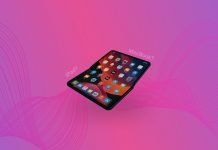A few weeks ago I wrote a review of Remarks, a PDF-based note taking and markup application for the iPad. In the review I wrote that the software becomes really useful when using a stylus, because it allows for natural handwriting and that it’s also very useful when editing and marking up PDFs.
The stylus I’m using is the Cosmonaut by Studio Neat. This pen for capacitive touchscreens started as a Kickstarter project and received tremendous support, mostly — and rightfully — because of the great success the two inventors had with their first Kickstarter project, the Glif. In December 2011, the first styluses were shipped out to customers. I bought mine about two months ago and these are my impressions.
The stylus is wide, very wide. The creators describe it as being akin to a dry erase marker, and they don’t lie. The stylus has a solid aluminium core, wrapped in a grippy rubber. The tip is made from a different kind of rubber which is very smooth and glides nicely across the glass of an iPad or an iPhone. On the back of my Cosmonaut, as you can see in the picture below, there’s a cherry wood insert, but there’s also an option to have a piece of aluminium on the back.
The Good
The stylus has a very nice heft to it, which works to the stylus’ advantage; it’s more comfortable to hold than most styluses I’ve previously owned. I have found the Cosmonaut to be comfortable to hold when using it like a marker — you know, for marking stuff, like text — or when using it like a regular pen to write and sketch. The weight and the width make it a pleasure to use.
Another great thing about it is the precision; despite having a seemingly wide tip, it’s very easy to write precisely, mark small portions of text and sketch fine lines. The rubber tip dents to the point where it touches the aluminium core of the pen. After a few minutes of using the Cosmonaut, this gives you a great feel for when the iPad will react to the input from the stylus. It’s certainly much better than any kind of capacitive stylus with a foam tip (like in the Ten One Pogo Sketch). I found that I could write just as precisely as with other styluses that have far smaller rubber tips.
The Not So Good
I love and hate the rubber shell of the Cosmonaut. On the one hand this gives it an incredibly great grip, meaning I don’t have to fear it slipping through my hands. On the other hand, it’s a dust collector, as the photo below shows.
I keep my stuff clean, and I regularly clean the stylus, but after putting it on a piece of fabric, you will see specks of dust on the thing. Another downside for me is that the rubber leaves some kind of residue on your fingers when using it. This is due to the kind of rubber Studio Neat used for the shell, and it’s definitely something that could be improved. The case makers Speck and Switcheasy both have silicone shells for various Apple devices in stock that collect almost no dust at all and don’t give you the feeling that you’ve waged a Rubberband War for the past hour.
The cherry wood or aluminium accents at the upper end of the stylus are a nice touch and definitely give it that little extra design, but they also add an element of frailty to it. My Cosmonaut arrived with the piece of cherry wood sticking out a little from under the rubber shell (not enough glue had been applied to the piece of wood during assembly). While that wasn’t something I deemed worth asking for a replacement — I fixed it in mere minutes using strong glue that doesn’t dissolve rubber — it’s a weak point in the pen and I refrain from applying any kind of lateral pressure to the area where the wood is glued to the aluminium core. I’d have preferred one piece of aluminium wrapped in rubber, not a two-piece construction.
I’ve also heard from people who’ve been using the Cosmonaut intensively for almost half a year that the rubber tip can wear off/through. That is to be expected at some point and Studio Neat seems to be handling this admirably.
Conclusion
I’ve owned and used many a stylus, including the Pogo Sketch, two styluses by Elago and one by both Belkin and Griffin; the Cosmonaut trumps them all during extensive use for university research.
While the two negative points I mentioned aren’t deal breakers, I’d love to see them addressed in some manner in the next version of this product. A different, less lint-loving rubber or silicone material would do a lot for the haptic feel and the long term looks of the pen. A one-piece construction of the core would eliminate a potential point of failure at the back of the stylus, making it even more sturdy. Alternatively the aluminium/wood accent could be attached to the core mechanically.
With this in mind, the Cosmonaut is still the best stylus for the iPad I’ve used so far; it’s solid, grippy, comfortable, very precise and I can recommend it wholeheartedly to anyone looking for a great stylus.






